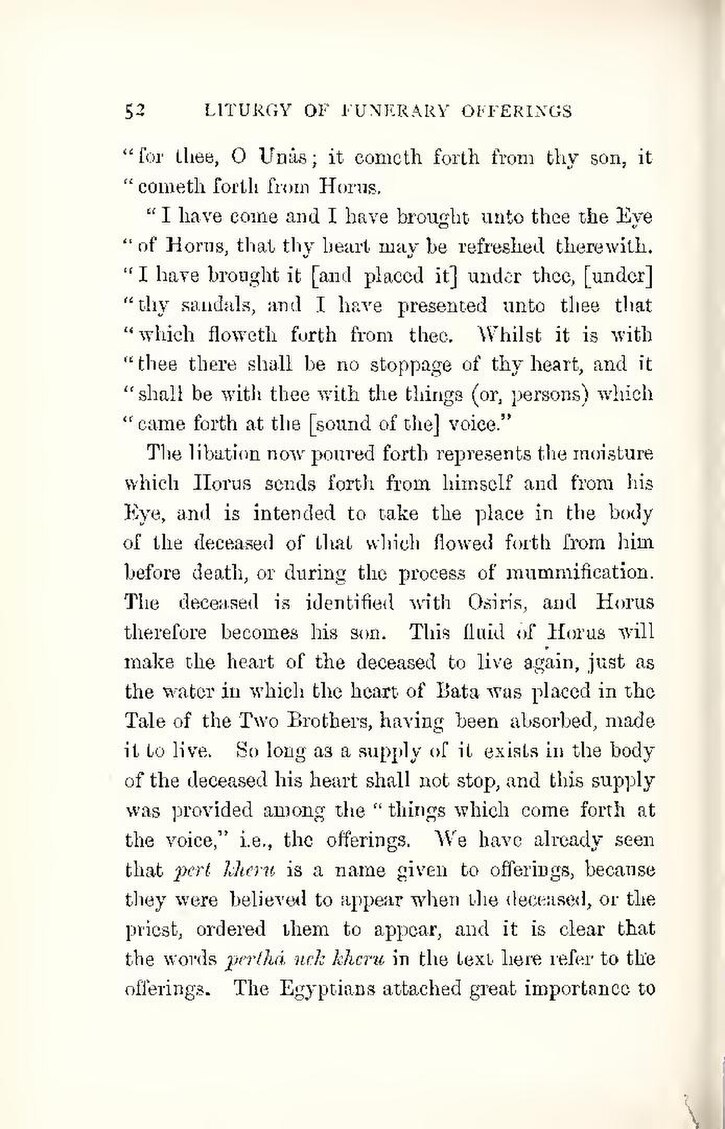for thee, O Unȧs; it cometh forth from thy son, it cometh forth from Horus.
“I have come and I have brought unto thee the Eye of Horus, that thy heart may be refreshed therewith. I have brought it [and placed it] under thee, [under] thy sandals, and I have presented unto thee that which floweth forth from thee. Whilst it is with thee there shall be no stoppage of thy heart, and it shall be with thee with the things (or, persons) which came forth at the [sound of the] voice.”
The libation now poured forth represents the moisture which Horus sends forth from himself and from his Eye, and is intended to take the place in the body of the deceased of that which flowed forth from him before death, or during the process of mummification. The deceased is identified with Osiris, and Horus therefore becomes his son. This fluid of Horus will make the heart of the deceased to live again, just as the water in which the heart of Bata was placed in the Tale of the Two Brothers, having been absorbed, made it to live. So long as a supply of it exists in the body of the deceased his heart shall not stop, and this supply was provided among the “things which come forth at the voice,” i.e., the offerings. We have already seen that pert kheru is a name given to offerings, because they were believed to appear when the deceased, or the priest, ordered them to appear, and it is clear that the words perthȧ uck kheru in the text here refer to the offerings. The Egyptians attached great importance to
